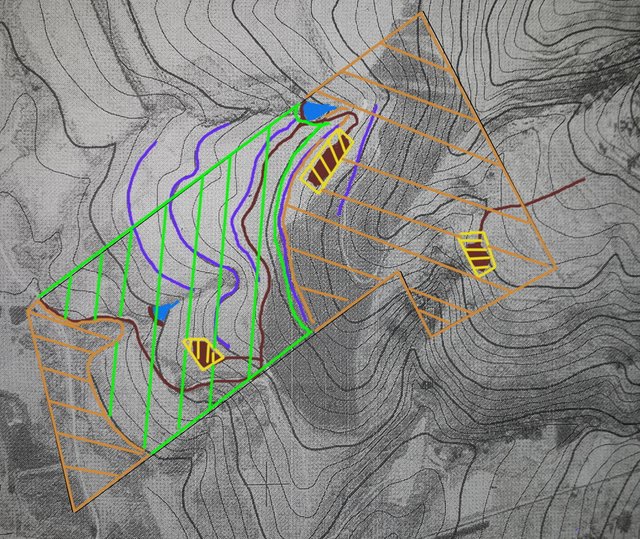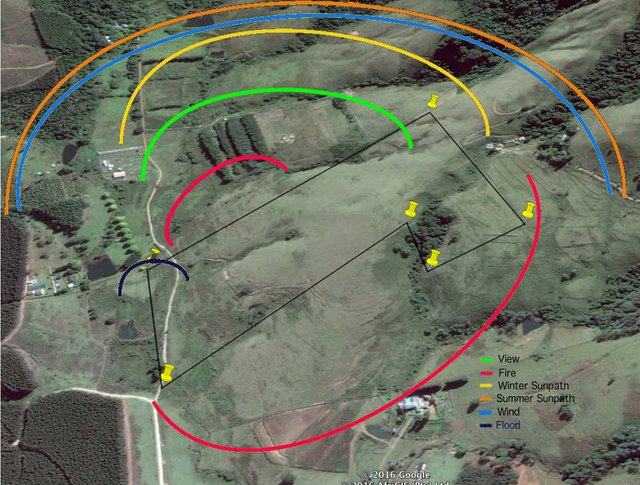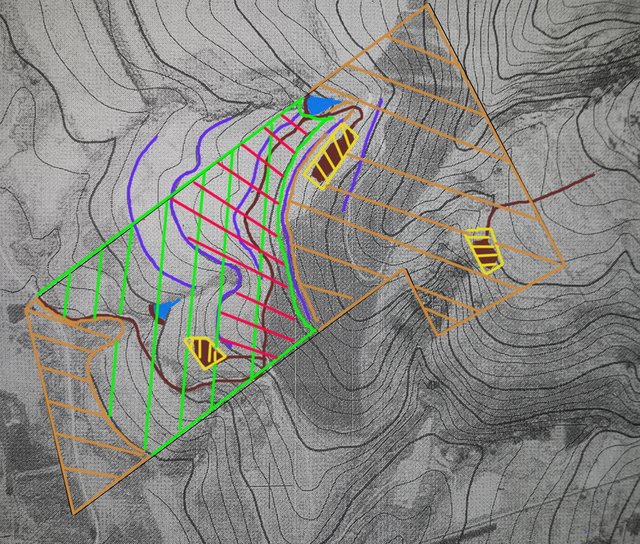Remember Rustlers Valley? Probably not.
You have to be from South Africa and of a certain age to recall the epic outdoor festivals in the mountains of the Eastern Free state near Lesotho. Apart from festival culture, Rustlers was also the initial home of Permaculture in South Africa. Festival goers who just never went home started establishing gardens to feed themselves, Bill Mollison came to visit and Permaculture arrived in SA.
I attended a PDC at Rustlers 15 years ago as a starry eyed corporate IT guy who had "tuned in" and was preparing to "drop out" and live off grid. That journey didn't go quite as smooth as planned but that's a story for another day. What did transpire though is that i got to practice Permaculture at many levels for many subsequent years. Most of it on a backyard scale but recently broadacre inquiries started coming in. Seems SA is starting to wake up to the way....
The project I will be blogging about here is the largest I have undertaken to date. The site is 20Ha in extent of which 8Ha will be transformed into Zone 3 food forests. 3 of those 8Ha will be a culinary truffle producing polyculture and the remaining 5 will be focused on fruit and nut production in the canopy with all manner of ground cover and tuber yield thrown in for fun.
SO let's have a quick run through the design.
The zone analyses. Despite my deep affinity for Permaculture as a concept, I am not a purist and the zone analyses bellow reflects that. The client brief was to build a food forest. He is not interested in any traditional Zone 2 type activities so we didn't include it.

The sector analyses:A Sector analyses renders an overview of the influence of wild energies on the site. While these wild energies are largely outside of the realm of human control, they influence the placement of elements with in the design. The following sectors were identified:
- View; Aesthetics has been identified as being of great concern and as such locations with the best views were identified in order to place residences.
- Fire; The site flora consists primarily of grassland and, being in a summer rainfall zone, the winter winds coupled with dry and dead grassland poses a serious fire threat. Two fire sectors have been identified. One to the North and a larger to the South. In both sectors the aspect of the slope holds the potential of grass fires rapidly moving up the slope.
- Winter Sun path
- Summer sun path
- Flood; a Flood sector has been identified along the valley's main drainage located along the access road to the South-West of the site.

3 guilds will be established, one on the swales and two in cropping areas between swales.
Swale guild: The on-contour swales planted with swale guilds will form the supporting forested element in an Agroforestry alley cropping system by providing dynamically accumulated nutrients to the cropping areas between swales. The design calls for various indigenous trees and shrubs which further supports the cropping areas by attracting birds and other insect eating predators as well as pollinators such as butterflies and bees while serving the ;larger ecosystem by providing wildlife corridors to facilitate the movement and shelter of indigenous wildlife. A further function of the swale guilds is that it creates microclimates in the shelter of the forest strips which deflect cold wind and acts as a sun and heat trap. The guild itself will comprise of various supporting species which will be heavily 'chop & drop' pruned in order to catalyse succession syntropy to generate a layer of living soil. The swale guild will be stacked in 5 layers namely; high canopy, canopy, understory, herbaceous understory and groundcover
Fungus producing guilds:The sector of Zone 3 earmarked for fungus producing guilds is approximately 3ha in extent and is depicted on the diagram bellow as red and green.

The guild will be planted on a 3m honeycomb grid pattern laid out between swales. This planting pattern has been shown to be optimal in terms of maximum contact between individual trees' roots. These contact points are where truffles form.

The species will be time stacked with Poplar and Casaurina being the fast growing canopy species which will provide shelter for the slower growing species to establish. The poplar and Casaurina will be cut back in year 6. The 3m planting density is higher than what would be optimal for a regular food forest but the goal is to shade out any groundcover in order to be able to harvest truffles effectively.
Fruit and Nut Guilds: The remainder of zone 3 is earmarked for fruit and nut guilds which will populate the cropping zones between swales. In addition to the fruit, berry and nut bearing plants, a variety of supporting species is incorporated into the guild to provide nutrients, repel pests, attract pollinators and predators as well as provide other yields such as medicinal or culinary herbal uses.
The project will roll out in 4 phases over the next 2 years and I will be posting updates here regularly.
If you are still reading, thanks for your time and interest. Follow me for regular updates as we progress!
What an AMAZING post!!! Love it. Now I really feel like visiting the site in person. Please keep posting!
Downvoting a post can decrease pending rewards and make it less visible. Common reasons:
Submit
Thanks @stortebeker. You are welcome to pop round for a visit. Part of the client's long term vision is to use the site for educational purposes.
Downvoting a post can decrease pending rewards and make it less visible. Common reasons:
Submit
Hahaha, well I would LOVE to come. South Africa is a bit far for me though... But it would be so nice to participate in the planning and implementation of a food forest. Anyway, I featured your article in my curating post: https://steemit.com/curating/@stortebeker/some-favorite-posts-i-want-to-share
Downvoting a post can decrease pending rewards and make it less visible. Common reasons:
Submit
Ok ... you got it. Love the design. Working on having the resources to implement similar on our 85Ha in Mpumalanga. Work in progress. 100 mature fruit trees, 40 grape vines and 10 000 garden plants on 1Ha in propagation for our little nursery so far...
I would like to learn more about food forest design and visit your site. I have a plan that includes a 8Ha food forest on this farm.
Downvoting a post can decrease pending rewards and make it less visible. Common reasons:
Submit
Thanks @farmerbrendan. You are welcome to visit anytime. The site is located near Richmond in KZN. Whereabouts in Mpumulanga? I recently had an inquiry from Tonteldoos near Dullstroom for a similar project so might be traveling there in the near future. It would be good to connect.
Downvoting a post can decrease pending rewards and make it less visible. Common reasons:
Submit
We are in Emanzana (Badplaas). Close to your route to Dullstroom. Email me at [email protected].
Downvoting a post can decrease pending rewards and make it less visible. Common reasons:
Submit
Done
Downvoting a post can decrease pending rewards and make it less visible. Common reasons:
Submit
Awesome news. Will follow your updates here.
Downvoting a post can decrease pending rewards and make it less visible. Common reasons:
Submit
Was wondering when I was going to bump into you here :) Hope Italy is treating you well my friend?
Downvoting a post can decrease pending rewards and make it less visible. Common reasons:
Submit